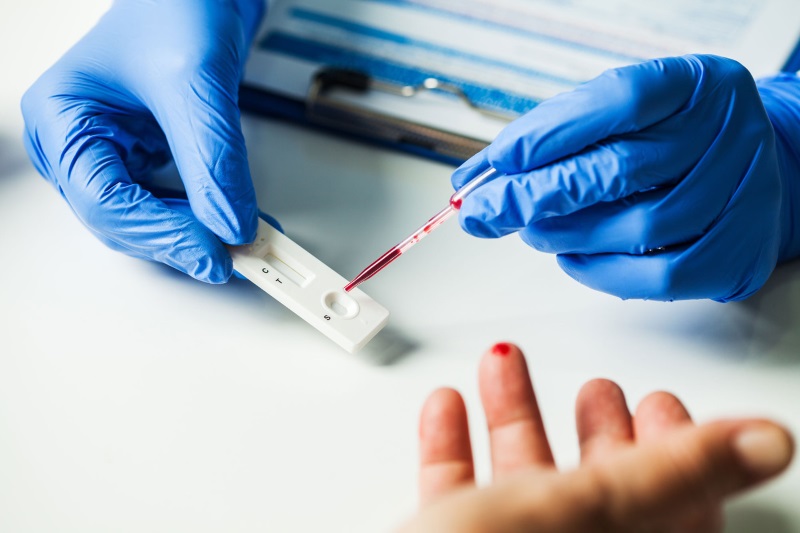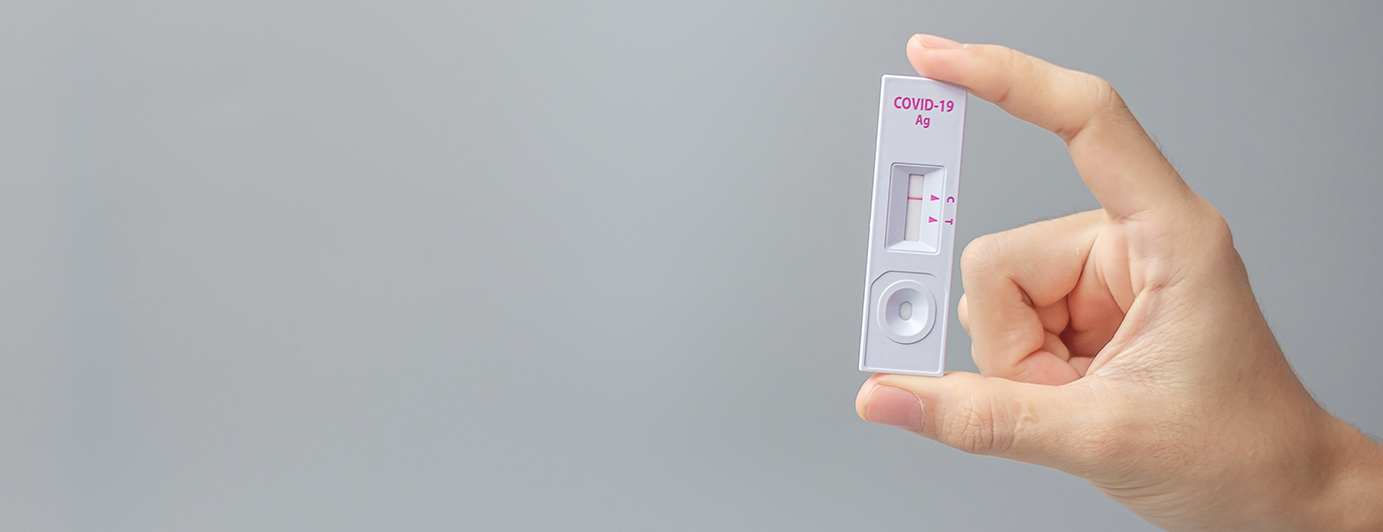The COVID-19 IgM/IgG Rapid Antibody Test is a fast and effective method for screening IgM and IgG antibodies against SARS-CoV-2. This test can also suggest information on the stage of infection. The below articles describes how to interpret and understand an antibody rapid test result.
The antibodies IgG and IgM are the most used markers of infectious diseases. IgM is produced first during infection and is usually used as a marker of acute infection. IgM gradually decreases and disappears after the appearance of IgG. IgG usually exists in the body for a longer time, even after the virus has been eliminated.
The COVID-19 IgM/IgG test cassette is coated with two test lines (M and G) and a control line (C). If the sample contains novel Coronavirus nucleoprotein (N)/spike glycoprotein (S) IgM or IgG antibodies, they will bind to the gold-labeled novel Coronavirus nucleoprotein (N)/spike glycoprotein (S) antigen, thus forming a colored line at M and G lines.
Need Rapid COVID Testing Solutions?
Valid Positive Antibody Rapid Test Result
IgM and IgG positive – If both the test lines (IgM/IgG) forms a colored band, then the results is positive indicating the presence of IgM and IgG antibodies
IgG positive – If the IgG test forms a colored band, then the result is positive indicating the presence of IgG antibodies
IgM positive – if the IgM test line forms a colored band, then the result is positive indication the presence of IgM antibodies
A positive test means you have COVID-19 antibodies in your blood, which indicates past infection with the virus. It’s possible to have a positive test result even if you never had any symptoms of COVID-19. False-positive test results can occur. It may be that the test detected antibodies to a coronavirus closely related to the COVID-19 virus or that the test quality was flawed.

Valid Negative Antibody Rapid Test Result
If only the control line C shows color, but the IgG and IgM test lines do not show color, the result is negative showing the absence of IgM/IgG antibodies
A negative test means that you have no COVID-19 antibodies, so you probably were not infected with the COVID-19 virus in the past. Because it takes time for antibodies to develop, false-negative test results can happen if the blood sample is collected too soon after your infection started. In some cases, the antibody levels were too low for the test to detect.

Invalid Antibody Rapid Test Result
If the control line fails to appear, the test results are invalid. Insufficient sample volume or incorrect procedural techniques are the most likely reasons for control line failure. Review the procedure and repeat the test with a new test cassette.
People who have had COVID-19 or tested positive for antibodies should not assume they’re protected from getting a COVID-19 infection again. Researchers are trying to determine if antibodies provide some immunity to the COVID-19 virus, what the level of protection is, and how long immunity may last.

Aurora is a supplier of these rapid antibody tests
Learn more information about our tests here.
Until more is known, even if your test results show that you have COVID-19 antibodies, continue to take precautions — including wearing a face mask in public, frequently washing your hands, and practicing social distancing — to avoid the risk of spreading the virus.




